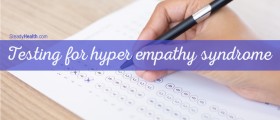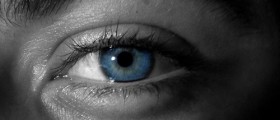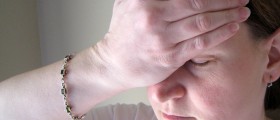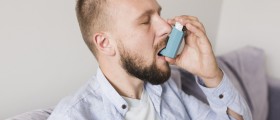The name to describe this sensation originated in 2010 and was coined by a cybersecurity professional in New York. The name was chosen as it describes how this phenomenon is experienced by people.
- Autonomous - to imply that it occurs spontaneously, with or without control.
- Sensory - indicating that the senses are involved.
- Meridian - this signifies that the sensation reaches a climax or peak.
- Response - this refers to the trigger(s) of the experience which are internal or external factors.

Triggers
One of the main triggers which people will report as stimulating an ASMR response is gentle touching or caressing of specific areas of the skin. Most people have experienced this at some point or other in their lives.
Videos are being posted online which are intended to stimulate an ASMR response in others. These videos can include the following stimuli:
- A voice which is softly spoken or someone whispering.
- Attentively watching someone performing a mundane task.
- Listening to repetitive, quiet sounds from someone performing said mundane task.
- Being the recipient of tender and personal attention from the person in the video.
Clearly, many audiovisual triggers can stimulate the experience of ASMR in people, and these can be divided into different groups.
Whispering triggers
In a study where nearly 500 people were exposed to whispering as a stimulus, 75% of them experienced ASMR.
Acoustic triggers
Some people have also reported certain ambient noises being triggers for ASMR such as tapping or scratching a surface, the sound of writing, crumpling paper or foil and even that of a person eating.
Personal attention/tactile triggers
Back massages, having nails painted, getting a hair cut and even getting ears cleaned involve physical touch, with or without vocal expression being involved, which can stimulate an ASMR reaction.
In the above-mentioned study it was found that 69% of the participants had an ASMR experience when they were exposed to personal attention as a trigger.
Clinical role player triggers
It has been reported by people that any clinical attention which was given to them, in regard of a healthcare worker examining them or performing a therapeutic procedure, has also acted as a trigger for experiencing ASMR.
There are even those that have reported that they have experienced these benefits by watching people, acting like doctors, simulate clinical examinations and therapeutic procedures on patients, also actors.
Clinical implications
- en.wikipedia.org/wiki/Autonomous_sensory_meridian_response
- Photo courtesy of SteadyHealth







-in-Multiple-Sclerosis_f_280x120.jpg)








